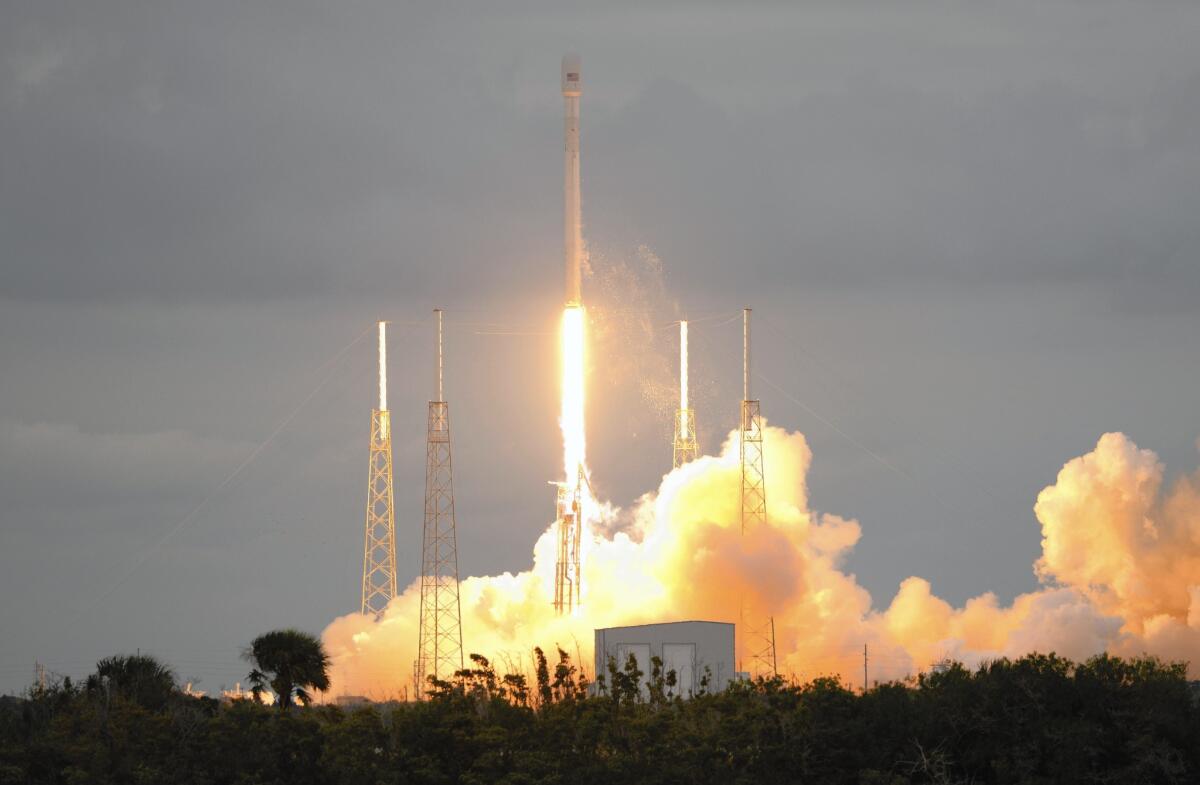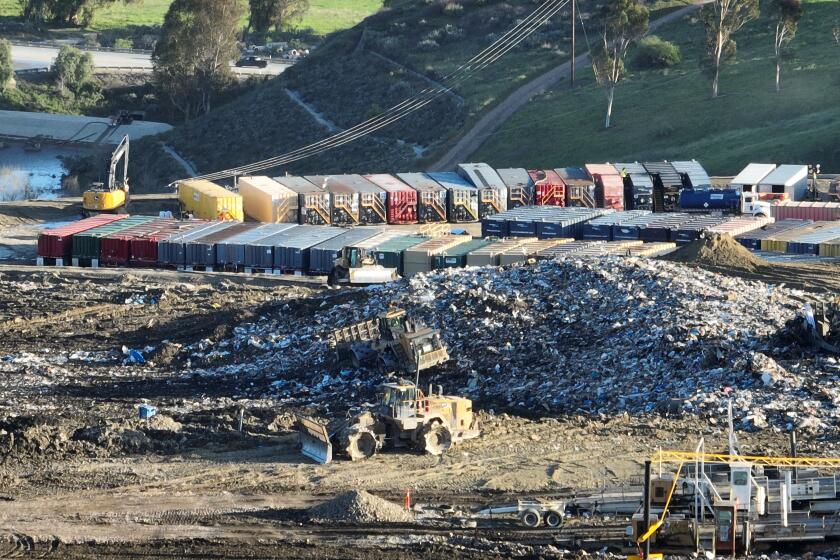SpaceX plans to launch rocket, then land its engines on an ocean barge

- Share via
Entrepreneur Elon Musk’s SpaceX is planning to launch a rocket early Tuesday that could ultimately be most notable for what happens as it returns to Earth.
The rocket, scheduled for liftoff at 3:20 a.m. Pacific time from Cape Canaveral, Fla., will be carrying much-needed cargo to the International Space Station. It’s the first such mission since Oct. 28, when a supply ship that another company, Orbital Sciences, was operating for NASA exploded just seconds after leaving the launchpad.
Besides delivering 5,000 pounds of food, equipment and experiments, SpaceX engineers are planning to attempt what has never been done. Instead of letting the rocket’s towering first stage disintegrate upon reentry to the atmosphere, they plan to land it on a barge floating in the ocean.
Typically, the rocket’s first stage, which includes the engines needed to blast it to space, is allowed to fall back to Earth after separating from its payload. After burning up in the atmosphere, it lands in pieces in the ocean or remote places.
But Musk wants to land the 14-story first stage, which includes nine engines, and reuse it on a future flight.
If successful, the feat could transform space travel by sharply lowering the cost.
“To say it would be revolutionary is absolutely true,” said Charles Lurio, a Boston-based space analyst who publishes the Lurio Report. “It could be a race toward the bottom in terms of cost.”
The space shuttle was reusable, Lurio said, but it was extraordinarily expensive to rebuild and refurbish once it was back on Earth.
Already, SpaceX has shaken up the satellite-launching business by having some of the lowest launch costs in the world.
“Reusability is really, I think, the critical breakthrough needed in rocketry to take things to the next level,” Musk explained this fall at a public event at MIT.
But the landing won’t be easy. The Hawthorne-based company compares it to “trying to balance a rubber broomstick on your hand in the middle of a wind storm.”
To start, engineers must slow the rocket, traveling at nearly 3,600 miles per hour, to zero. They already proved they could do that in two previous launches, when they slowed the first stage so that it briefly hovered over the water, before toppling over.
With this launch, the rocket will be equipped with landing legs as well as deployable steering fins that will help engineers guide it to the barge, which will be floating in the Atlantic some 200 miles east of Jacksonville, Fla.
Musk calls the football field-sized barge the “autonomous spaceport drone ship.” It is not anchored, but equipped with thrusters that help it stay in place.
The company said last month its odds of success are “50% at best.”
The flight would be the sixth time that SpaceX has reached the space station. It is the fifth trip covered by a $1.6-billion deal that SpaceX has with NASA to shuttle cargo back and forth from the space station.
The launch was first planned for Dec. 19, but SpaceX delayed the flight after an engine was shut down prematurely during a pre-launch test. The engine test was later completed without problem, the company said.
If Tuesday’s liftoff is delayed, the next opportunity to launch is Friday.
Twitter: @melodypetersen







